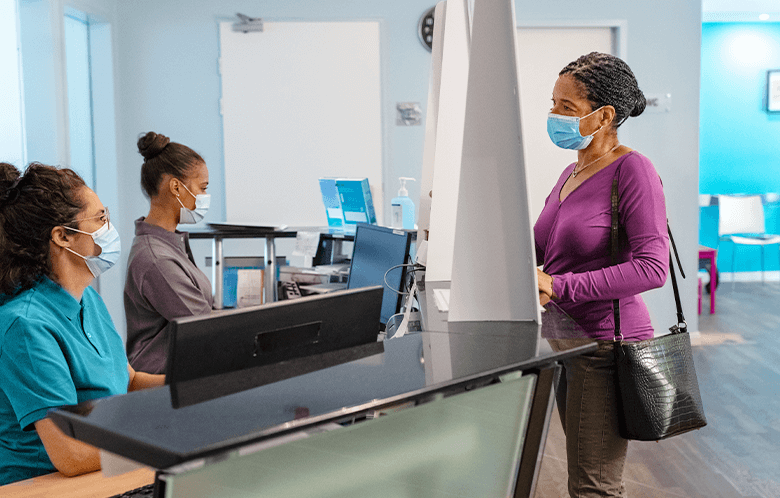What do we know about the vaccines?
Pfizer, Moderna, and AstraZeneca have each reported promising results of potential vaccines in competing press releases. Pfizer’s Phase 3 trial randomized more than 43,000 participants to receive either an mRNA vaccine or placebo and asked them to report symptoms of COVID-19. When 170 cases of COVID-19 were confirmed in trial participants (162 cases in the placebo group and 8 in the vaccinated group), analysis suggested the vaccine was 95 percent effective in preventing symptomatic COVID-19 infection (p<0.0001). Simultaneously, Moderna enrolled over 30,000 participants for a Phase 3 trial of their mRNA vaccine. After 95 confirmed cases (90 cases in the placebo group and 5 in the vaccinated group), the Moderna vaccine demonstrated 94.5 percent efficacy (p<0.0001). Similarly, AstraZeneca reported Phase 2/3 trial results for a viral vector vaccine with 131 cases of COVID-19 in over 23,000 participants.
Unlike the other two groups, the AstraZeneca researchers performed weekly surveillance for asymptomatic infection. Two different dosing regimens were evaluated. When trial participants received a half dose followed by a full dose at least one month apart, the vaccine was 90 percent effective. Efficacy was 62 percent when given as two full doses at least one month apart. For both of these regimens, most patients who developed severe COVID-19 did not receive the vaccine. No serious safety concerns have been reported with any of these vaccine candidates. One notable distinction is the storage requirements for the different vaccines: Pfizer’s vaccine must be stored at -70 degrees Celsius, and Moderna’s at -20 degrees Celsius, but AstraZeneca can be safely stored at two to eight degrees Celsius. It’s unclear if the Pfizer or Moderna vaccines will protect against asymptomatic infection or transmission, or how long immunity will last in any of the vaccines. As case counts increase, vaccine effectiveness may go down. But compared to the seasonal flu vaccine (typically 50-70% effective), 90 percent effectiveness (or greater) is really encouraging!
Once you’ve had COVID-19, can you get it again?
In April, we answered this question with a long-winded “we don’t know.” Now with a few months of data under our belt, we can answer this question with a “maybe.” Reinfection (with and without symptomatic COVID-19) has been reported, though it appears to be an infrequent event. Antibodies to SARS-CoV-2 may not be long-lasting, particularly in patients with mild disease, which has prompted the hypothesis that immunity might not be durable in all patients. Further, second waves of COVID-19 have raised the potential for variant strains and spike protein mutations which in theory could bypass any protection from prior infection and/or vaccination. So, it does seem possible to get COVID-19 again, but the extent to which reinfection may occur and whether waning immunity, variant viral strains, or both contribute to reinfection is currently unclear.
Can rapid tests reliably rule out disease?
A positive test can probably rule in disease, but don’t be falsely reassured by a negative rapid result. A systematic review compared two types of rapid tests, antigen and molecular, with reverse transcriptase polymerase chain reaction (RT-PCR). Rapid testing had a pooled sensitivity of 56.2 percent (95% CI 29.5%-79.8%) and a specificity of 99.5 percent (95% CI 98.1%-99.9%). For a cohort of 1,000 hypothetical patients with a disease prevalence of 10 percent, 56 would be correctly diagnosed with COVID-19, while 44 would have a false negative result and five would have a false positive result. While rapid results may be ready in 15 minutes, negative tests should be confirmed with RT-PCR.
Are supplements helpful in preventing COVID-19 infection or reducing severity?
To date, no studies have identified any direct benefit for vitamin D or zinc in terms of reduced SARS-CoV-2 infectivity or severe COVID disease. Cohort data from 489 patients suggest an association between vitamin D deficiency and increased rates of COVID-19 (relative risk 1.77, 95% CI 1.12-2.81), but it’s just as likely that an unidentified confounder could be putting some individuals at risk for both vitamin D deficiency and SARS-CoV-2 infection. The situation is similar for zinc, with studies not yet demonstrating an effect of zinc supplementation in COVID-19 prevention, duration, or severity. Reflecting current clinical trial data, the National Institutes of Health does not recommend zinc supplementation above the daily allowance for prevention of COVID-19.
Is vertical transmission common?
In a recent meta-analysis of 24 studies with 1,100 pregnant women with COVID-19, COVID-related neonatal intensive care unit (NICU) admission was reported in two percent of neonates, with 19 of 444 neonates (4.3%) having a positive nasopharyngeal swab and one in five neonates (20%) having elevated concentrations of serum IgM and IgG but a negative swab. Of note, 23 percent of infants were delivered preterm and 85 percent of the deliveries in this meta-analysis were by cesarean section. The authors note that the cesarean delivery rate was not fully explained by maternal disease severity or fetal compromise and may be partly attributable to an abundance of clinical caution despite international and American guidelines recommending vaginal birth for patients with COVID-19 when possible.
How should clotting risk be handled?
In addition to alveolar damage, it is now clear that COVID-19 often causes microscopic and macrovascular clotting in the lungs of patients with severe disease. The coagulopathy associated with COVID-19 is unusual: it seems associated with elevated d-dimer levels even in those without macrovascular thrombus and also increased fibrinogen with little change in platelet or prothrombin levels. To make matters worse, the occurrence of clotting despite anticoagulation has been reported. In addition to routine prophylaxis, some experts are recommending baseline and surveillance Doppler ultrasound examination for peripheral thrombosis in patients with severe pulmonary COVID even in those without extremity symptoms. This advice makes sense in the ICU setting but can’t be extrapolated to the outpatient setting.
Does blood type matter?
An association between ABO blood groups and COVID-19 was first reported in March 2020 after a meta-analysis of 2,000 patients in Wuhan, China identified a positive association between blood group A and COVID infection (odds ratio [OR] 1.28; 95% CI 1.14-1.44), and negative association for blood group O (OR 0.68, 95% CI 0.59-0.77). In October, a meta-analysis of two case-control panels examined 8.5 million single-nucleotide polymorphisms and identified a 3p21.31 gene cluster coinciding with the ABO locus in patients with COVID-19-induced respiratory failure. This study also found a higher risk of severe COVID-related disease in people with blood group A (OR 1.45, 95% CI 1.2-1.75) and a lower risk for blood group O (OR 0.6, 95% CI 0.53-0.79). This information suggests that people with blood group A may have a slightly higher risk of acquiring and developing severe COVID-19, while those with blood group O may be at somewhat lower risk, although the true clinical significance of these associations has not been adequately established.
How common are sensory loss and other neurologic manifestations?
Much attention has been given to the frequency of taste and smell abnormalities associated with mild COVID-19. However, in hospitalized patients, these symptoms are each only present in about 15 percent of patients, and more severe problems are more commonly reported. Encephalopathy, leptomeningeal involvement, strokes, and other neurologic complications have been reported to cause 4 percent of deaths from COVID-19.
What about GI symptoms and diarrhea?
GI symptoms are reported in three to 40 percent of patients with COVID-19, with diarrhea being the most frequently reported. Other symptoms include nausea/vomiting, belching, and abdominal pain. GI symptoms may occasionally be the only presenting complaints, but we still don’t have high-quality evidence about their incidence. Liver dysfunction may also occur and seems more common in patients with more severe COVID-19. Liver problems might occur due to the adverse effects of antiviral medications or in relation to the infection itself, particularly in patients with diabetes or underlying liver disease.
Does working from home reduce the risk of infection?
A case-control study examined the work habits of 314 symptomatic patients tested for COVID-19. Among patients who tested positive for COVID-19, 35 percent were working from home and 65 percent were working outside the home. In contrast, among patients who were sick but tested negative, 53 percent worked from home and 47 percent worked outside the home. Patients with symptoms but negative COVID-19 testing were also more likely to identify as non-Hispanic White, report a college degree, and have chronic medical conditions. After adjusting for age, sex, race, and underlying medical conditions, case-patients were more likely to work in an office or school setting (adjusted OR 1.88, 95% CI 1.2-2.7). Due to the inherent bias of case-control studies these results have low certainty, but they are worth considering before your next chat at the water cooler.
For more information, see the open-access topic COVID-19 (Novel Coronavirus) in DynaMed®.



